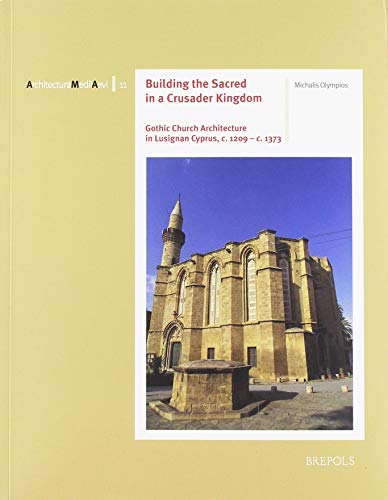All books / Book
Building the Sacred in a Crusader Kingdom: Gothic Church Architecture in Lusignan Cyprus, c. 1209 - c. 1373 (Architectura Medii Aevi)

| Full title: | Building the Sacred in a Crusader Kingdom: Gothic Church Architecture in Lusignan Cyprus, c. 1209 - c. 1373 (Architectura Medii Aevi) |
|---|---|
| ISBN: | 9782503536064 |
| ISBN 10: | 2503536069 |
| Authors: | Michalis Olympios |
| Publisher: | Brepols Publishers |
| Num. pages: | 445 |
| Binding: | Paperback |
| Language: | fr |
| Published on: | 2018 |
Read the reviews and/or buy it on Amazon.com
Synopsis
At The Eastern Confines Of Latin Christendom, Between The Levantine Crusader States, Byzantium, And Islam, The Lusignan Kingdom Of Cyprus (1192-1489) Was Home To A Rich And Diverse Array Of Gothic Ecclesiastical Structures, Significant Remains Of Which Are Still To Be Seen Today. From The Grand Latin Cathedrals Of Nicosia And Famagusta, The Austere Churches Of The Mendicant Orders, And The Magnificent Monastic Buildings Of Bellapais Abbey To The Imposing Greek And Nestorian Cathedrals Of Famagusta And The Churches Of The Eastern Christians (armenians, Melkites, Maronites, Etc.), Cypriot Gothic Architecture Evolved To Serve The Needs Of The Island's Multi-cultural And Multi-creedal Society. This New Study Is Based On Original Research On The Physical Fabric Of Cyprus' Gothic Ecclesiastical Edifices, On A Thorough Exploitation Of The Published Archaeological Data, And On A New Reading Of The Extant Documentary Sources (some Of Which Are Published Here For The First Time) To Offer A Fresh Account Of The Development And Place Of Cypriot Gothic In The Architectural History Of Medieval Europe And The Eastern Mediterranean. It Proposes To Do So By Re-evaluating And Re-contextualizing The Ambitions Of The Patrons And The Choices (and Compromises) Of The Master Masons Responsible For This Unique Monumental Heritage. The Conclusions Reached In This Study Have Far-reaching Implications For The History Of Gothic Architecture On The Island And The Surrounding Region. The Cathedral Of Nicosia, The Kingdom's Capital, Re-emerges As The Single Most Important Architectural Undertaking Of The Period. Not Only Is It Singled Out As The Site Where Full-fledged Gothic Was First Introduced In The Latin East In The Early Thirteenth Century, It Is Also Identified As The Chantier Where French Rayonnant Made Its Cypriot Debut In The Latter Part Of The Century, Nearly Thirty Years Before Famagusta Cathedral Was Renovated In An Up-to-date Rayonnant Style In C. 1300. With The Rise Of The Royal Port-town Of Famagusta After The Fall Of Acre (1291), Two Major Architectural Centres Developed Side By Side, Leading Parallel And Seldom Converging Lives. The Distinctiveness Of Their Styles Is Thrown Into Higher Relief By The Creation Of A 'crusader Revival' Architectural Idiom Unique To Famagusta By The 1360s, To Visually Complement The Crown's Crusading Policies. The Study Of Lesser Churches In The Two Royal Towns, As Well As The Major Non-urban Monastic Complex, Bellapais Abbey, Demonstrates How The Ideas And Designs Introduced At The Two Cathedrals Were Adopted And Adjusted To The Tastes And Needs Of A Diverse Local Clientele, Ranging From The King And The Mendicant Orders To The Greeks And Eastern Christians.